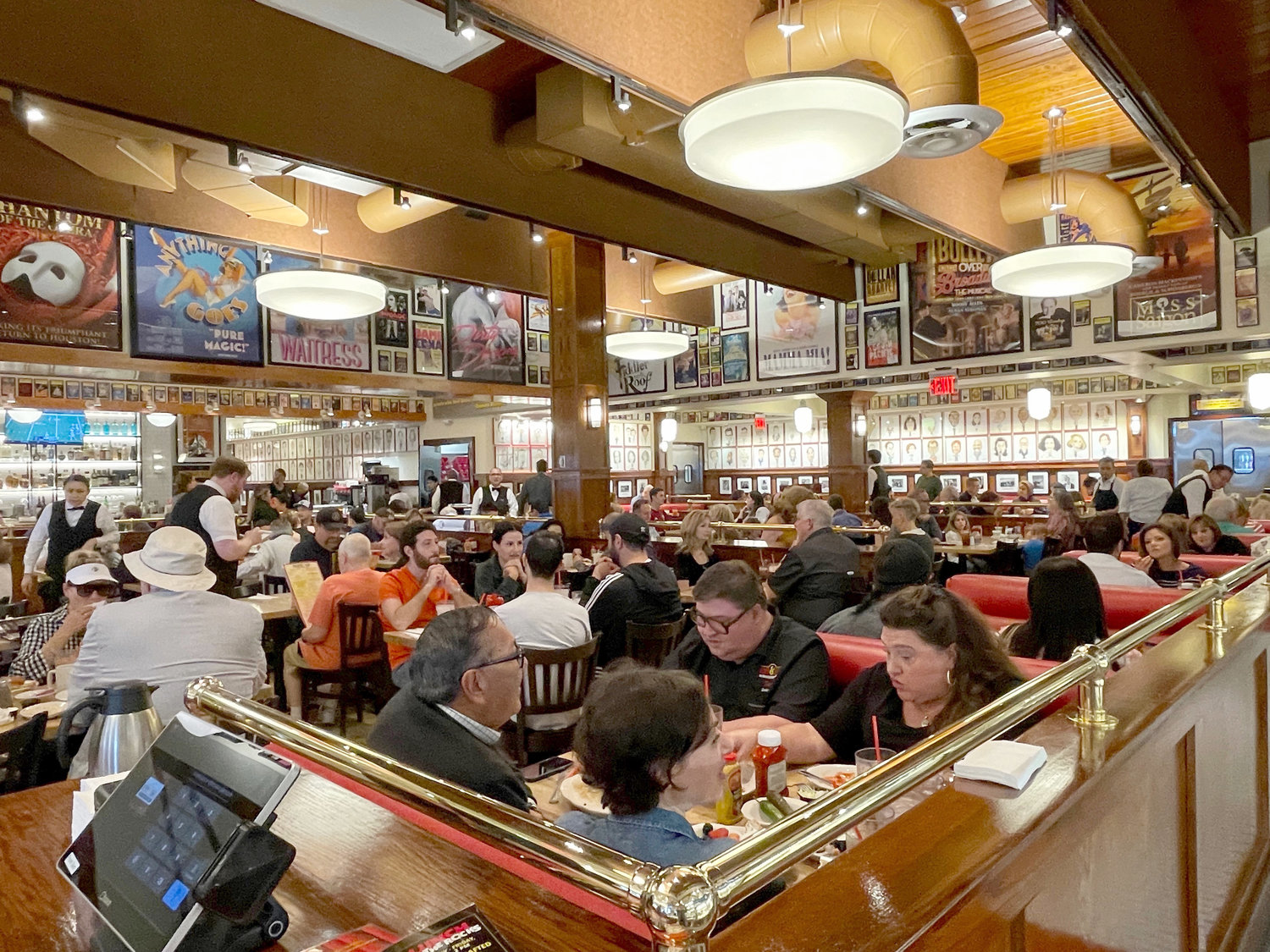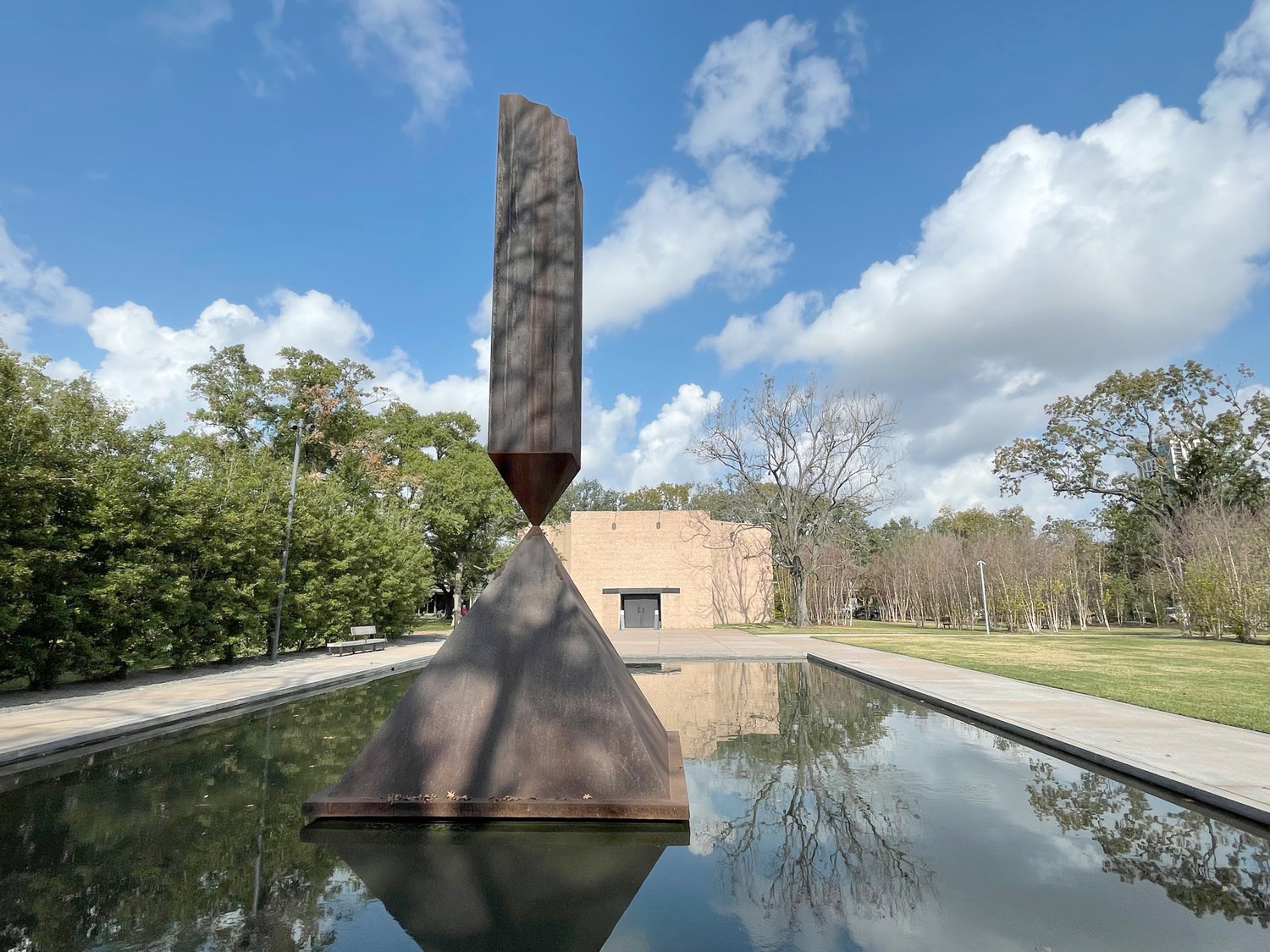Glimpses, flavors and echoes of Houston
Over a half-century, I’ve visited Texas several times, primarily to enjoy its splendid art museums. I’m particularly fond of the Kimbell, in Fort Worth. In addition to having a magnificent collection, the museum’s original building, which opened in 1972, was designed by the great American-Jewish architect Louis Kahn. As much as I enjoy both of his splendid art museums at Yale, I’ve been back to Fort Worth three times to savor what he accomplished.
I’ve also visited art museums in Austin, Corpus Christi, Dallas and Houston. But there isn’t one in Van, Texas. This is where the late Adrian Hall, the founding artistic director of Trinity Rep, grew up and retired. In 1992, as the theater company’s archivist, I journeyed there to complete a lengthy series of oral history interviews with him.
Betsey and I were recently in Houston, America’s fourth-largest city, primarily to visit our son, Michael, who has lived there for two years.
It was wonderful seeing Michael and his new home, and there was also time to explore many cultural sites. Metropolitan Houston’s Jewish population is around 65,000, making it the 17th largest in the country. So there are numerous places of Jewish interest, though not necessarily in Jewish institutions.
The Rothko Chapel, a veritable art museum, was established in 1971 by leading Gentile benefactors John and Dominique de Menil. (They were also instrumental in recommending Andy Warhol for curating “Raid the Icebox,” a 1970 exhibition at the RISD Museum.)
A small, nondenominational shrine, designed for prayer and contemplation, the Rothko Chapel is adorned with 14 abstract paintings, which were created by perhaps America’s greatest Jewish visual artist, Mark Rothko, shortly before his untimely death.
When entering the chapel from the bright out-of-doors, the paintings appear almost monochromatic. Upon close examination, however, this haunting cycle displays subtle variations. But if the canvases convey a religious meaning, it is far from uplifting. In my opinion, only the skylight atop the hexagonal structure provides a hopeful message.
By the way, another major American-Jewish abstractionist, Barnett Newman, created the chapel’s nearby steel sculpture, which adorns a reflecting pool. A broken obelisk, placed upside down, it perhaps illustrates the precariousness of human existence. Also commissioned by the de Menils, it was intended to commemorate improved race relations, but city officials rejected it.
The same couple built the nearby and extraordinary Menil Collection, which opened in 1987. The Italian architect, Renzo Piano, whose work I much admire, designed the original building and a smaller satellite gallery. An amazing synthesis of ancient, tribal and modern art, the Menil includes several fine pieces by avant-garde Jewish artists, among others.
For Houston residents and visitors who enjoy sculpture gardens, the example found amid the five-building Sarofim Campus of the Museum of Fine Arts is a treat. Designed by the great Japanese-American sculptor Isamu Noguchi, and dedicated in 1986, it presents more than 30 representational and abstract pieces.
The Houston garden was surely inspired by Noguchi’s astonishing Billy Rose Sculpture Garden, one dimension of the extraordinary Israel Museum, which opened in 1965. In addition to showcasing outstanding examples of modern and contemporary sculpture by leading Jewish and Gentile artists, the Rose offers sweeping vistas of Jerusalem in nearly every direction. I’m afraid that Houston’s more modest sculpture garden, which includes a few pieces by Jewish artists, cannot measure up. What could?
The Houston museum’s three major buildings, connected underground, were also designed by leading architects. The second, the Beck Building, which opened in 2000, was the work of a Spaniard, Rafael Moneo, who later designed the Chace Center at our RISD Museum.
The museum’s newest structure, the Kinder Building, designed by Steven Holl and dedicated in 2020, is by far the most sensational. Focusing on mid-20th century and contemporary art, it includes impressive examples by several American-Jewish artists, including Rothko, Helen Frankenthaler and Louise Nevelson, all three of whom are also represented at RISD.
Fortunately, our family’s nourishment was not limited to art and architecture. Michael explained that, according to some recent studies, Houstonians eat out more often than residents of most large American cities.
Hamsa is a quite popular Israeli restaurant not far from our son’s home. The mostly vegetarian dishes were not only tasty, but gorgeous to behold
But for lovers of Jewish food, I cannot exaggerate the rewards of the enormous deli where we had Sunday lunch. I believe that the sandwiches, soups, salads and desserts at Kenny & Ziggy’s are as huge and delicious as any that I’ve ever tasted in the U.S. And a carnival atmosphere also prevailed.
But our enormous and joyous lunch also raised a somber note; any troublemaker could have barged in and wreaked havoc.
I mention this possibility because that Sunday morning, I had attempted to visit Temple Emanu El, a Reform congregation. Built in 1948, it was inspired by Frank Lloyd Wright’s much earlier work.
Not having written or called ahead, I thought that I could explain my Jewish and architectural credentials to a temple staffer on duty during religious school. Wrong! Not only do high metal fences keep Jews and strangers away, but my three conversations with guards – two by intercom, one in the parking lot – had no effect. Not knowing that even exterior photos were forbidden, I had taken a few before being warned.
Fortunately, I did feel welcomed by Houston’s large and vibrant Jewish community when Michael showed me a copy of its newspaper, the Jewish Herald Voice. I quickly noticed a column by Rabbi David B. Rosen, a Houston native who led Cranston’s Temple Torat Yisrael from 1984 to 1996, before returning to lead Houston’s major Conservative congregation, Beth Yeshurun. This was in fact the congregation where he had grown up.
I’m aware that two more Houstonians have served Rhode Island congregations. Rabbi Wayne M. Franklin, who led Providence’s Temple Emanu-El from 1981 to 2019, had also grown up at Beth Yeshurun. And Michael Z. Cahana, the son and brother of rabbis, was an assistant rabbi at Providence’s Temple Beth-El from 1995 to 2000.
Even with its excellent art museums and bagels, would I feel at home in Houston? Well, the city is an hour’s drive from an ocean, but it feels larger than our entire state. And where are Houston’s Benefit Street, College Hill or Blackstone Boulevard? Even compared to my native Los Angeles, the city looks and feels brand new!
GEORGE M. GOODWIN, of Providence, has edited Rhode Island Jewish Historical Notes for 19 years.











